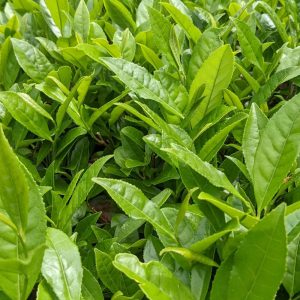
Yamakai (やまかい、山峡) means “ravine”.
The name of this cultivar comes from the fact that it has a color similar to mountain tea.
It’s suitable for sencha, kabusecha and gyokuro.
History of Yamakai
This cultivar originated from a seed of a Yabukita tea plant.
It was tested at present day Shizuoka tea research center since 1949.
It was finally named Yamakai and its cultivation was encouraged throughout the prefecture in 1967.
However, it is an unregistered cultivar.
Characteristics of Yamakai
Yamakai can be picked at the same time as Yabukita.
Its mature leaves are deep green in color, slightly small, and somewhat thin.
They have a diamond shape.
Yamakai has a medium resistance to cold weather.
This cultivar is weak against anthracnose and bacterial shoot blight, but has medium resistance to blister blight and gray blight.
Regarding pests, it’s slightly susceptible to the white peach scale.
Yield at harvest is about the same as Yabukita.
As a sencha, Yamakai has a good quality.
The leaves can be rolled tightly and have a desirable green color.
The liquor also has a color that’s considered to be good, a clear green.
There’s sweetness in its taste as well as umami. It feels refreshing.
But the most unique aspect about Yamakai is its aroma.
Some people like it, while others hate it.
It feels like an aroma from food, with slightly sour notes, mayonnaise, and oil.
I haven’t tasted this cultivar yet, but I’m eager to do so.




